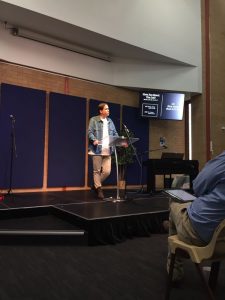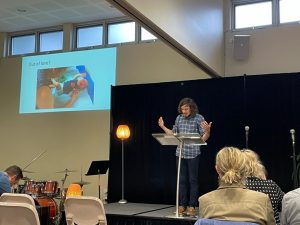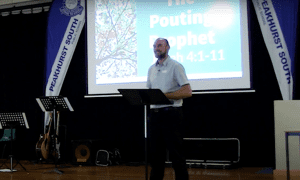“Why did God send Jesus to die? L-O-V-E love that’s why. Why on the third day did he rise? L-O-V-E love that’s why.”
 So goes part of the song sung this morning at Mainly Music, a music playgroup that happens at Peakhurst each week. Singing, dancing, beanbag throwing, snacking, chatting, and friendships growing.
So goes part of the song sung this morning at Mainly Music, a music playgroup that happens at Peakhurst each week. Singing, dancing, beanbag throwing, snacking, chatting, and friendships growing.
It was an exciting morning, and such an encouragement to hear that the majority of mums who come each week with their toddlers are non-church goers.
Please pray that many of these mums will show interest in coming along to church. Thank God for the church volunteers who lead. Pray that they would have boldness to have fruitful conversations over morning tea and for perseverance as they invest in these relationships.
 With the rain hammering on outside, we spent the afternoon practicing for a Scripture Assembly while some of the team headed off to IRT Aged Care Centre to run the chapel service. Richard had a very encouraging conversation with a lady who shared her story of how she came to know Christ. After a difficult marriage breakdown and seeking out a local church, she heard a lady explain the gospel to her, which gripped her with such clarity. She was struck that God would love someone like her who had been through so much, and that Jesus really did die for her. It was encouraging hearing how she remains strong in her faith, and her daily prayers are so full of thanks to God for what he’s done for her.
With the rain hammering on outside, we spent the afternoon practicing for a Scripture Assembly while some of the team headed off to IRT Aged Care Centre to run the chapel service. Richard had a very encouraging conversation with a lady who shared her story of how she came to know Christ. After a difficult marriage breakdown and seeking out a local church, she heard a lady explain the gospel to her, which gripped her with such clarity. She was struck that God would love someone like her who had been through so much, and that Jesus really did die for her. It was encouraging hearing how she remains strong in her faith, and her daily prayers are so full of thanks to God for what he’s done for her.
Thank God for these men and women at IRT. Thank God for the opportunity Andy had to give a talk and Annika to share her testimony. Pray that God would continue to strengthen the faith of these saints as they remind one another of the kindness of God’s grace to them.
To keep in your prayers:
- The Scripture assembly happening tomorrow (Wednesday). There will be 80 children plus their teachers hearing of the underserved kindness God has shown in Jesus.
- Door knocking happening over the week. Pray for good conversations.












